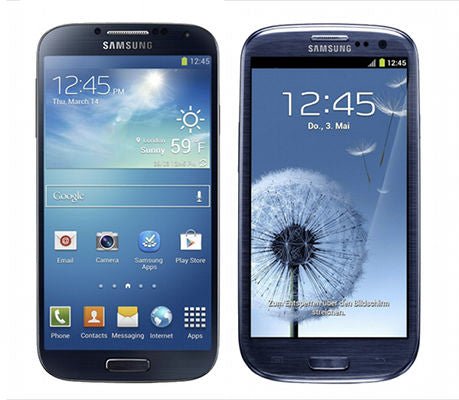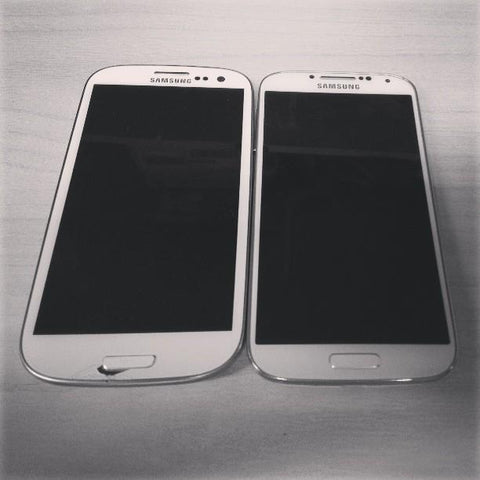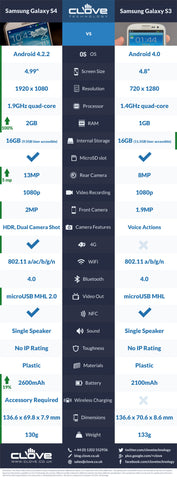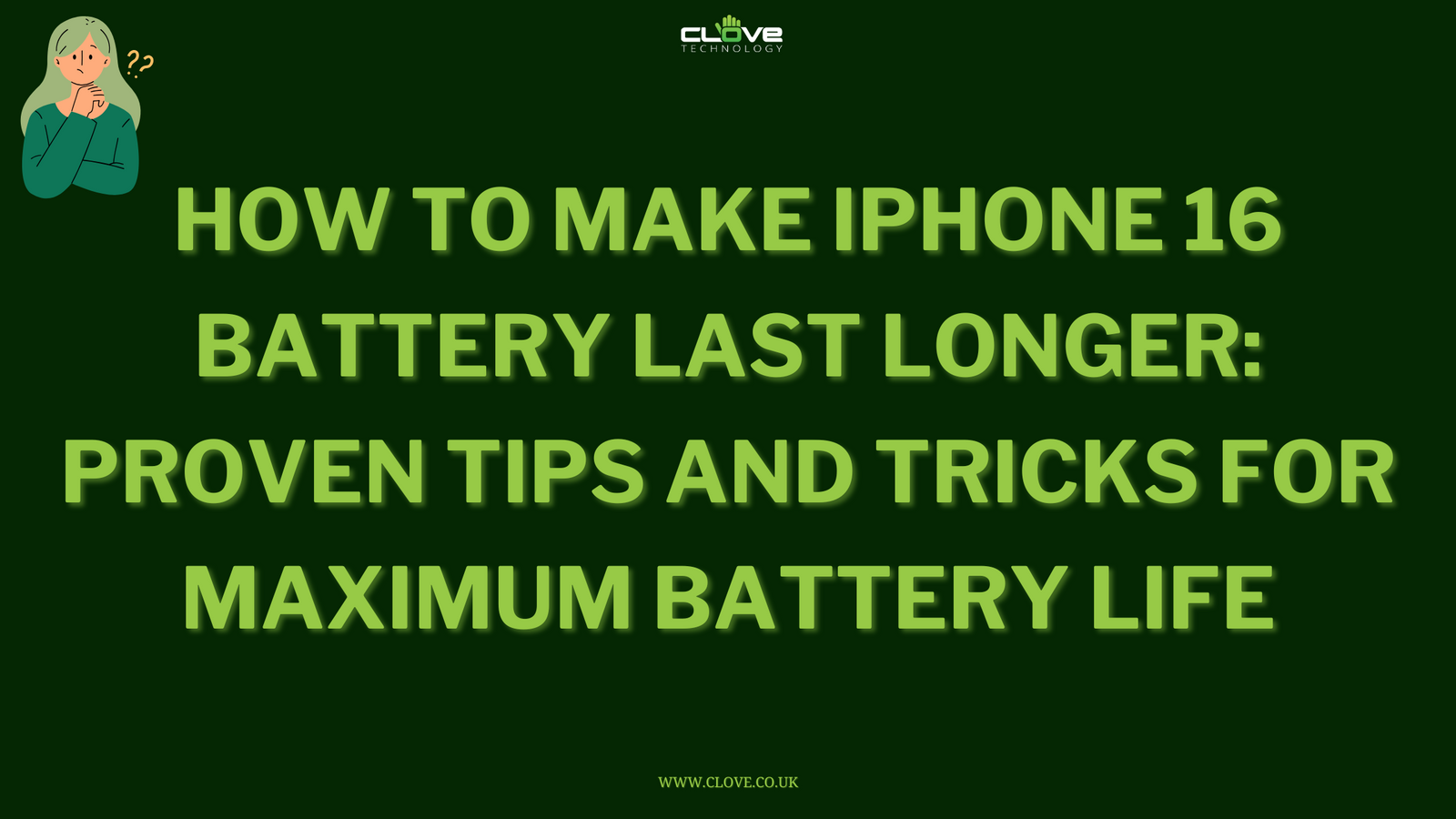Samsung galaxy S3 vs. Samsung Galaxy S4 – what’s the difference?
At first glance, there’s not a huge difference between the Samsung galaxy S3 (available to order here) and the S4 (available to order here), – their form factors are incredibly similar; the dimensions of the devices are pretty much the same and they have a similar look about them.
However, if you’re weighing up a purchase between the two, you’ll notice there’s a fair bit of difference in the price tags – £315 + VAT for the S3, £445 + VAT for the S4.
So what generates this difference in price? Is it worth paying the extra for the S4, or should you save a few quid and stick with the still impressive S3?
First of all, here’s a brief run through of the differences between the two. These are discussed in more detail throughout the rest of the article, so keep reading if you want to know more.

What’s new in the Samsung Galaxy S4?
-
Larger display, with a higher resolution
-
More built-in features
-
Better camera
-
More processing power
-
Newer version of MHL (TV out), which requires less cables to set up
-
Better battery life
-
Slimmer and lighter design
-
Better accessory range
Read the full differences below or sit back and watch the following video:
Size
Overall the two handsets are pretty much the same size. The main difference is the thickness – the S4 is slightly thinner – but the width and height are pretty much the same. The S4 is also lighter, but marginally so.
Display
Samsung has increased the screen size of the S4 by 0.2” to 4.99”. It has also reduced the bezel, which is why it’s possible to have a larger screen but smaller dimensions.
While a larger screen gives you more viewing real estate, it also creates a bigger reach from one side of the screen to the other. This can make one-handed use tricky at times. A reduced bezel can also cause you to accidentally touch the screen more frequently, so bigger does not necessarily mean better.
As for screen resolution the S4 definitely comes out the winner. It has full HD (1920 x 1080) and a pixel density of 441 ppi. This really does produce a crisp picture. The S3 isn’t far behind though; it’s got a resolution of 1280 x 720, which is still very impressive when playing back videos. Both handsets user Super AMOLED technology so there’s not much difference to draw in that aspect.
Design
As mentioned previously the two newest members of the Galaxy S family don’t look all that different. Samsung tends to take a bit of a bashing for its use of plastic but, unperturbed, it has continued this trend with the S4. That being said, it has managed to make the S4 look a little classier than its predecessor. The back cover has a dotted pattern (which does, however, makes the handset look grippier than it actually is) plus the outer seam has been switched to metal.
Overall the S4 does have the sleeker look.
Power
Samsung has doubled the RAM in the S4 to 2GB and it’s also increased the handset’s processing power. There are two versions of the S4, but the one that we discuss here (and the more readily available) is that which has a quad-core processor. The other has an octa-core processor and is only available in certain markets.
For most, the change in processing power won’t make a huge difference – it’s mainly for activities such as gaming that you’ll need it. Even then, it’s only resource heavy games that’ll see the benefits – the likes of Angry Birds don’t need so much power.
Camera
First of all, there’s a big spec bump when it comes to the sensor – 13MP on the S4 compared to 8MP on the S3. There’s no denying that the S4 is one of the best camera phones out there and you won’t be disappointed by the quality that it produces.
Samsung has also added some impressive new software features to the camera on the S4. The majority of these will likely be rolled out to the S3 in an update at some point, but for the time being they’re exclusive to the S4. These include:
Drama Shot – take a burst of photos and combine them into a single frame
Sound & Shot – record a sound clip with your photo
Eraser shot – erase unwanted objects from the photo (this is great in theory but unfortunately the mode needs to be enabled before taking the photo, which defeats the purpose in most situations)
Dual camera shot – take a photo with the rear and front facing camera at the same time, which means that you can photograph yourself whilst capturing others and then stitch them both together.
Video recording has also been improved between the S3 and the S4, although perhaps not as much as you’d expect. One nice improvement is that the S4 has adopted the camera interface of the Samsung Galaxy Camera. This means that a still photo and video are captured using the same interface, so there’s no need to lose time switching between the two during the all-important moment.
In short, the improvements to the camera are one of the main reasons that you should consider the S4 over the S3.

MHL/Video Out
MHL is a great feature to have available on your handset – once you’ve had it, you’ll miss it if a future handset lacks it. Luckily both the S3 and the S4 have MHL, although there is a slight difference between the two specifications.
The S4 has MHL 2.0. This means that you do not require a microUSB cable to power the MHL adaptor, just the MHL adaptor itself and an HDMI cable. With the S3, you will need to power the MHL adaptor with a microUSB charger. The microUSB adaptor supplied with the handset is perfectly suitable for this so there’s no added cost in this sense, but there is the inconvenience of connecting an extra cable. That being said, it can still be useful to connect the power cable to the S4 MHL setup in order to preserve battery life.
The S4 MHL adaptor does have a higher refresh rate as well, which means you’ll see a better picture on the display that you connect the handset to. Of course if you would like to go completely wireless, both of these handsets both support miracast as well.
Battery
The S4 battery has a capacity that’s almost 25% larger than that of the S3. Once again this is an impressive design feat considering that Samsung has made the overall dimensions of the handset smaller.
The larger battery does have a larger screen to power, but the gains are disproportionate in favour of the battery life. Generally the S4 battery life has been well regarded by reviewers and even with fairly heavy usage, you should find yourself easily making it to the end of the day from one charge. You can find our S4 battery life review roundup here.
The battery life of the S3 is still fairly good, but doesn’t quite live up to that of the S4. Both handsets have a battery that is removable – something that is becoming more and more of a rarity among Android handsets – so there is the option to add a third party extended battery if you so choose.
TV Remote
Both Samsung and HTC have brought back IR blasters in their 2013 flagships so that they can be used as remote controls. The S4 functionality works pretty well out of the box and Samsung includes a supporting app called WatchOn, which provides an electronic programme guide and additional information for TV shows.
The S3 does not have TV remote functionality, although you could achieve something similar with a mega home automation setup, but this would require a fair bit of effort.
Unless you really want to be able to control your TV with your phone, it’s not a factor that should affect your buying decision.
Storage
Both of these handsets come with a microSD slot that’s expandable up to 64GB so in terms of removable memory – a feature that many top of the range handsets lack – they have you well covered.
The internal storage, however, has been a talking point surrounding the S4 somewhat. The user-accessible storage of the S4 is around 9.5GB of an advertised 16GB, which is the lowest seen to date in a ‘16GB’ Android handset. The S3 has slightly more user-accessible internal storage, although Samsung has vowed to address the S4’s situation after the handset was featured on BBC’s Watchdog show.
Software Features
With the Galaxy S4, Samsung has included plenty of new software features for the latest version of its custom Android skin, TouchWiz. Many of these will likely come to the S3 in a future update, however.
In the S3 Samsung introduced its first wave of eye tracking technology with SmartStay, which prevents the screen from powering off when you are looking at it. This technology has been progressed for the S4 and now includes SmartPause and SmartScroll. The former will pause a video when you glance away from the screen, while the latter will automatically scroll down the page that you are reading as you tilt the device.
We also posted in detail here about our some of our favourite TouchWiz features on the S4. Most of these are not yet available on the S3 (although some are featured on the Note 2) and include:
- The ability to disable the lock screen on trusted WiFi networks
- Quick Glance to show you important notifications when you reach for the phone
- An entire grid of toggles available from the swipe down menu
- AirView & AirGestures
Other features that have been introduced with the S4 include; Samsung Optical Reader, which will recognises printed text, scan it and then translate; Group Play, which enables you to connect several Galaxies wireless to boost the volume of music playback; and Samsung Adapt Display and Adapt Sound, which will automatically configure settings for the best picture and audio depending on which app you are using.
Finally, Samsung has also stepped up its S Voice (voice control) and S Translate to offer better voice commands and translations. S Voice Drive has also been added, which means that you can now use voice commands with compatible navigation apps.
[image name=samsung-galaxy-s4]
Accessories
There’s a nice range of accessories available for both these handsets, although the S4 will pip the S3 once its full range is available.
Samsung announced wireless charging capability for the S3 alongside the handset, although the accessories required to facilitate this never came to fruition. The same has happened for the S4 – the handset cannot be charged wirelessly out of the box, you need additional accessories – but this time around Samsung will deliver on its promises. The official accessories are due to arrive within the next month or so and there are already other third-party solutions available.
Both handsets have plenty of protection available in the way of third party and official cases. There is a new style of cases available for the S4, the S View Flip Cover, which has a small window cut out on its front so that you can view the time and check for notifications without powering opening the cover.
Also new to the Samsung Galaxy S4 are the S Health accessories (purchased separately), which help you to keep track of your fitness alongside the Samsung S Health app. These include a heart rate monitor, body scales and sleep monitor.
Conclusion
If it’s within your budget, you should certainly go for the S4 over the S3. However, if you’re looking to keep the spend down a bit, you won’t be disappointed by what the S3 has to offer: it’s a solid handset and still one of the very best available in the current market.
Samsung has added many features to the S4, some of which may seem gimmicky or unnecessary. However, we all use our smartphones differently, so there may be one or two features from either handsets that clinch the deal for you – the larger or smaller screen size, the larger battery, the new features, or the lower price tag – it really depends what you want from the experience.
If you’re considering upgrading from the S3 to either the S4 or another handset, you may wish to read our S4 upgrade dilemma post and our comparison with the HTC One. If you have any questions that you’d like answered, or if you’re a Galaxy user with something to add, let us know in the comments.
Samsung Galaxy S3 v S4 Graphic







